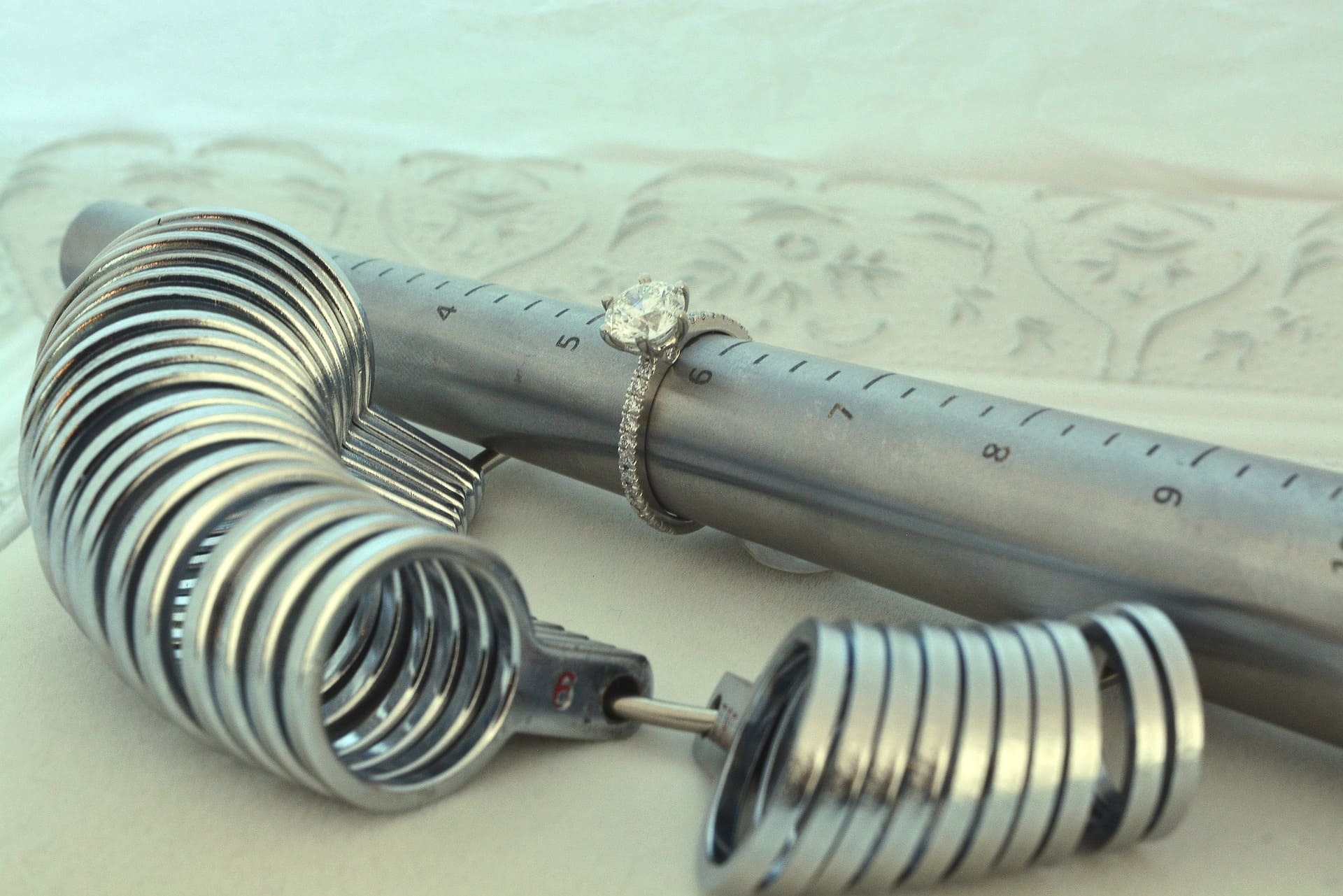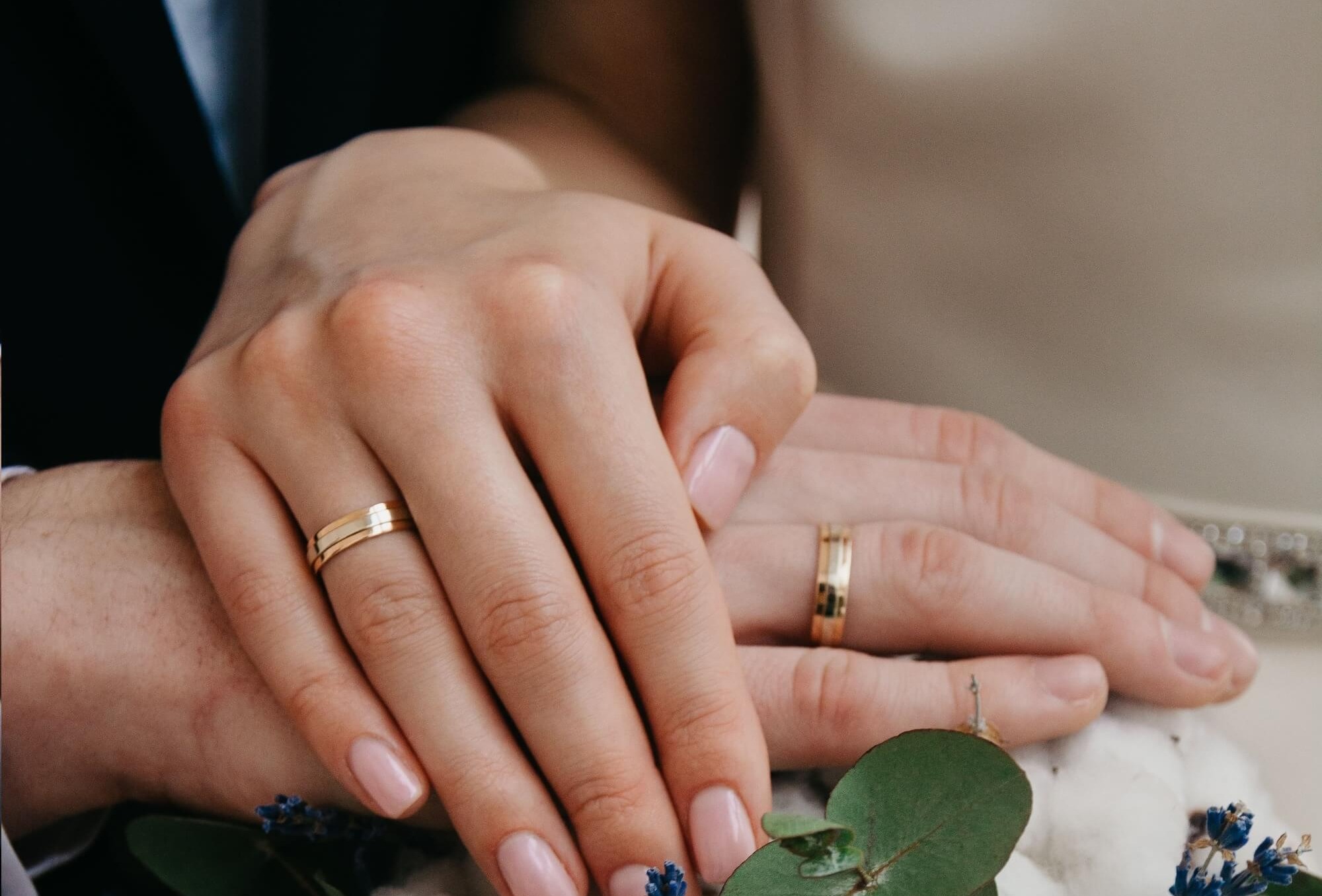How to measure ring size?

One of the most common questions we receive from customers is: How do we determine ring size? This question is often asked by people who are planning to buy a ring as a gift for someone else. There's nothing more disappointing during an engagement than receiving the wrong ring size! However, even when buying for oneself, the question of how to measure ring size is not unusual, and it's not at all surprising, especially since your fingers don't stay the same size throughout your life.
Finger Size
Finger size can change at different times in your life, such as during weight loss or periods of hormonal imbalance. The circumference of your finger can even vary depending on the season, time of day, or temperature. And as strange as it may sound, if you receive the wrong ring size when ordering online, it might not necessarily be incorrect. Your fingers could be more swollen than usual. It's worth waiting a day or two to ensure that the issue is indeed the wrong size and not swollen fingers. It’s also recommended to measure your finger size at different times and on different days to ensure reliable measurement.
Jewelry Ring Sizes
Just like clothing sizes, rings have international sizes that can differ from country to country. For example, American ring sizes can be up to two sizes different from Polish or European sizes. The ring size chart used in Slovakia is the same for all rings sold in Slovakia, so you can buy a consistent ring size at any jewelry store. The difference might be that some jewelers sell half sizes while others only sell whole sizes. If someone wears a size 14.5 and buys a size 14 ring, it may feel too small, and if they buy a size 15, it may feel too loose.
Which Ring Size to Buy?
When answering the question of which ring size to buy, the simplest answer is: measure the diameter of the finger for which you plan to buy the ring and/or its circumference, and then refer these values to a size chart. Here lies the first problem. It’s important to emphasize that this is not the circumference or diameter of the finger where the ring will be worn, but rather the diameter and internal circumference of the widest part of the finger, where the bone is located. The ring should pass over this part of the finger with minimal resistance but should not be too loose so it doesn't fall off. Ring sizes differ by only 0.33 mm in diameter.
The best way to measure your ring size would be to go to a local jeweler and have it measured with professional tools. However, this is not always possible. For example, if you want to buy an engagement or gift ring for someone and want it to be a surprise, you might need to steal a ring from your loved one—one they wear on the "right" finger—and try to estimate its size using home methods. Below are the most practical and popular methods for measuring ring size and finger size.
How to Determine Ring Size?
The simplest way to measure the circumference of your finger is to use a string or thread, which should be wrapped around the circumference of the finger at its widest (bone) part. Make sure the string or thread is not stretched, as this could cause inaccurate measurements. Then mark the point where the string overlaps and place this section along a ruler. The length in millimeters should be referenced in the ring size chart (circumference in millimeters) to determine the ring size.
There is also a second simple formula to calculate ring size from the circumference of your finger:
Ring size = Finger circumference in mm - 40
If your finger circumference is 60 mm, then according to the jewelry size chart below, you should wear a ring size 20. This method works for average finger sizes, but if you have small fingers (circumference less than 45 mm) or your finger circumference is over 65 mm, it’s better to use a table.
Ring Size Chart
| Size | Internal diameter (mm) | Internal circumference (mm) |
| 1 | 12.67 | 39.80 |
| 2 | 13.00 | 40.84 |
| 3 | 13.33 | 41.88 |
| 4 | 13.67 | 42.95 |
| 5 | 14.00 | 43.98 |
| 6 | 14.33 | 45.02 |
| 7 | 14.67 | 46.09 |
| 8 | 15.00 | 47.12 |
| 9 | 15.33 | 48.16 |
| 10 | 15.67 | 49.23 |
| 11 | 16.00 | 50.27 |
| 12 | 16.33 | 51.31 |
| 13 | 16.67 | 52.34 |
| 14 | 17.00 | 53.38 |
| 15 | 17.33 | 54.42 |
| 16 | 17.67 | 55.46 |
| 17 | 18.00 | 56.50 |
| 18 | 18.33 | 57.53 |
| 19 | 18.67 | 58.57 |
| 20 | 19.00 | 59.60 |
In the chart above, you can easily determine the size of the ring by measuring the circumference of your finger in millimeters. To convert the circumference to size, refer to the chart to find the corresponding ring size.
Additional Tips:
- Be sure to measure your finger at the end of the day, when your fingers are at their largest.
- Consider the width of the ring. Wider rings may need to be slightly larger than a thinner band for a comfortable fit.
- If you’re unsure about the size, it’s often better to err on the larger side. You can always resize a ring, but it’s harder to add material to make a ring larger.
In conclusion, determining the right ring size requires some attention to detail and careful measurement. By using the methods described and referring to the ring size chart, you can ensure a better fit and avoid the hassle of resizing later on. Whether you’re buying for yourself or as a gift, accurate sizing will make the experience much more enjoyable and satisfying.

